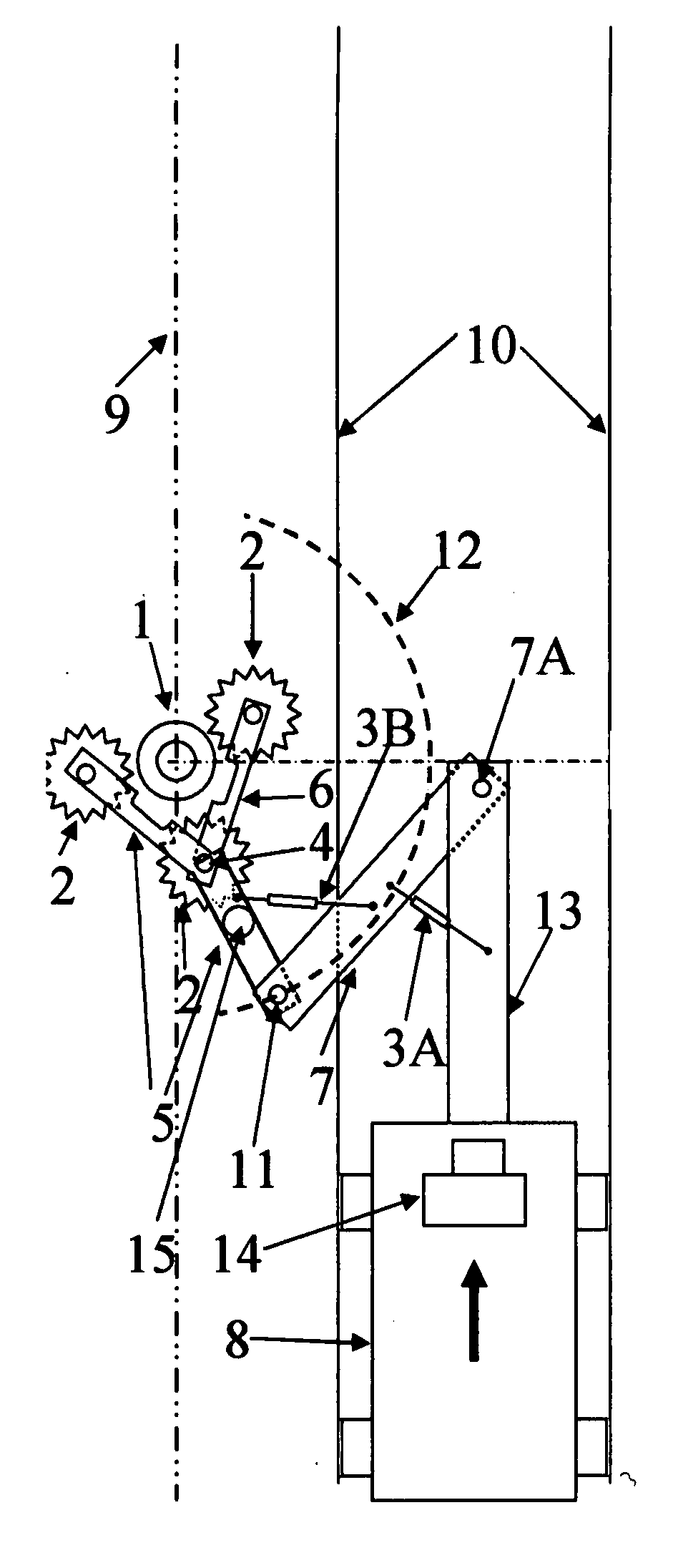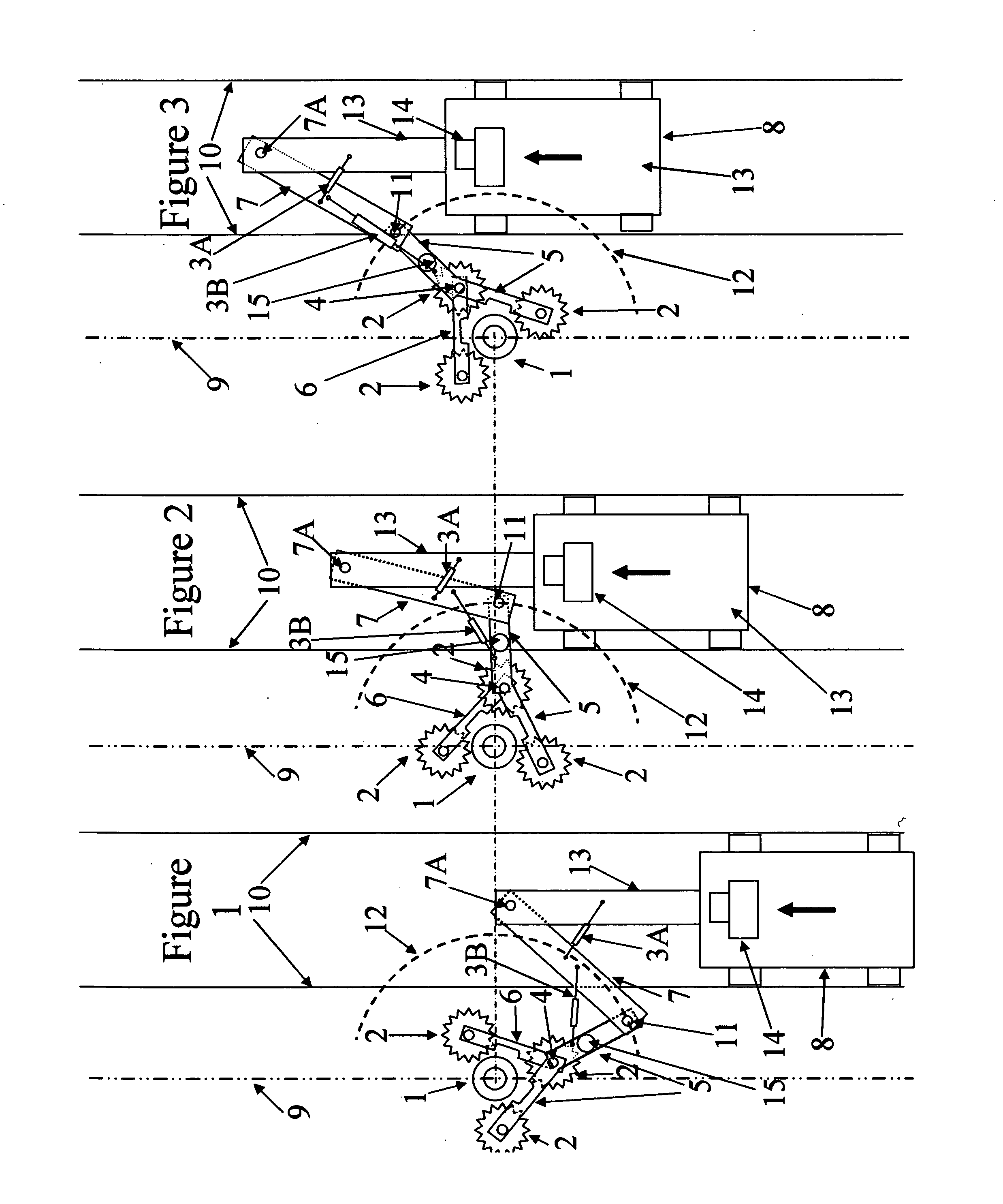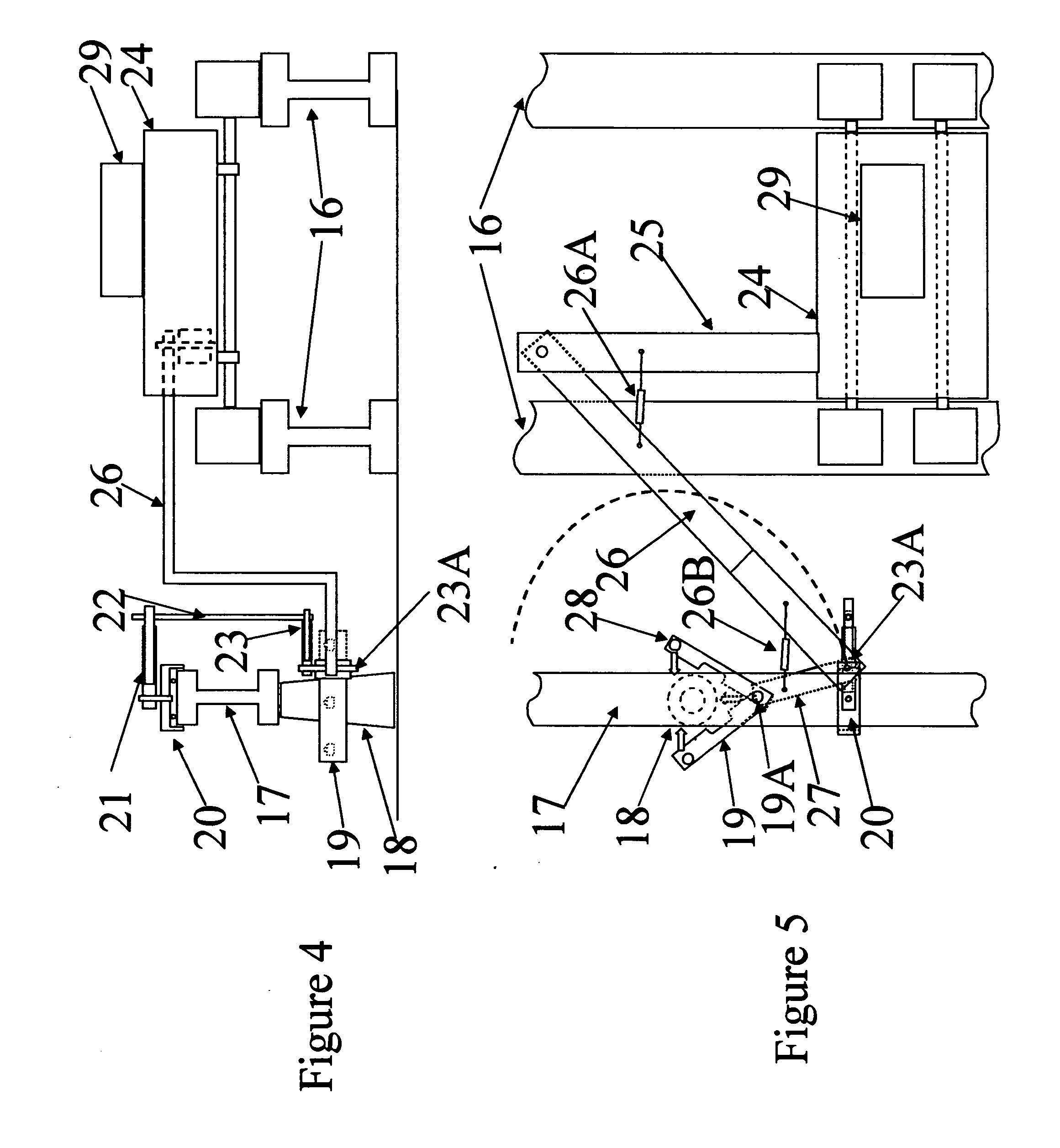Device and process for cleaning electrified contact rail insulators for rail rapid transit systems
a technology for electrifying contact rails and rapid transit systems, applied in the direction of carpet cleaners, cleaning using liquids, vehicle cleaning, etc., can solve the problems of limiting the access to the insulator, slow cleaning, expensive, etc., and achieves the effect of low-cost cleaning and fast cleaning
- Summary
- Abstract
- Description
- Claims
- Application Information
AI Technical Summary
Benefits of technology
Problems solved by technology
Method used
Image
Examples
Embodiment Construction
[0051] The device of the invention uses a positioning arm, preferably an articulated arm with at least two members connected by a hinge or pin to connect a service vehicle to a cleaning station. The cleaning station is connected to one end of the articulated arm with a hinge or pin so that it is capable of angular movement along a vertical axis around the insulator. The cleaning station has one or more fingers, which may be fixed or movable, that contact the insulator and bring the cleaning tools attached to the one or more fingers into operative proximity to the insulator. The one or more fingers may form a locking mechanism as in FIG. 9 that embraces the insulator.
[0052] There are several types of cleaning stations, with attached cleaning tools such as powered rotating, reciprocating, vibrating, oscillating and / or linear brushes, wrap around cleaning belts, sonic horns, ultrasonic vibrating guns, laser or laser scanners, pressure washing and / or water jetting nozzles on stationary...
PUM
| Property | Measurement | Unit |
|---|---|---|
| time | aaaaa | aaaaa |
| time | aaaaa | aaaaa |
| circumference | aaaaa | aaaaa |
Abstract
Description
Claims
Application Information
 Login to View More
Login to View More - R&D
- Intellectual Property
- Life Sciences
- Materials
- Tech Scout
- Unparalleled Data Quality
- Higher Quality Content
- 60% Fewer Hallucinations
Browse by: Latest US Patents, China's latest patents, Technical Efficacy Thesaurus, Application Domain, Technology Topic, Popular Technical Reports.
© 2025 PatSnap. All rights reserved.Legal|Privacy policy|Modern Slavery Act Transparency Statement|Sitemap|About US| Contact US: help@patsnap.com



